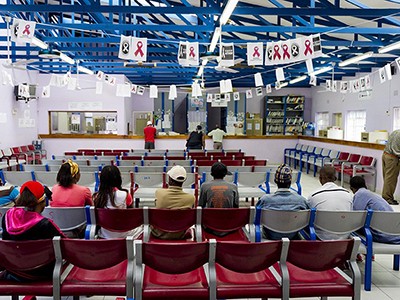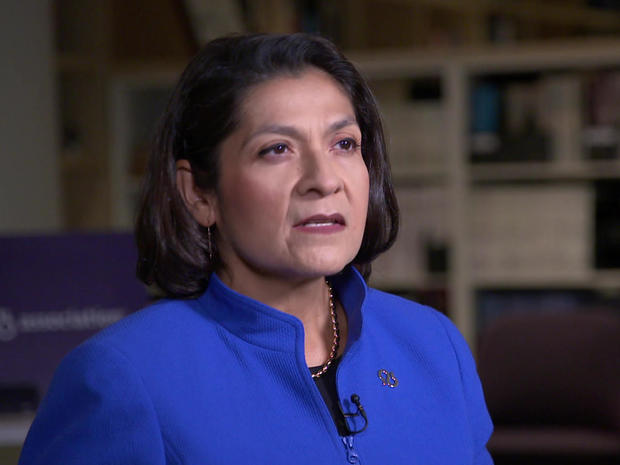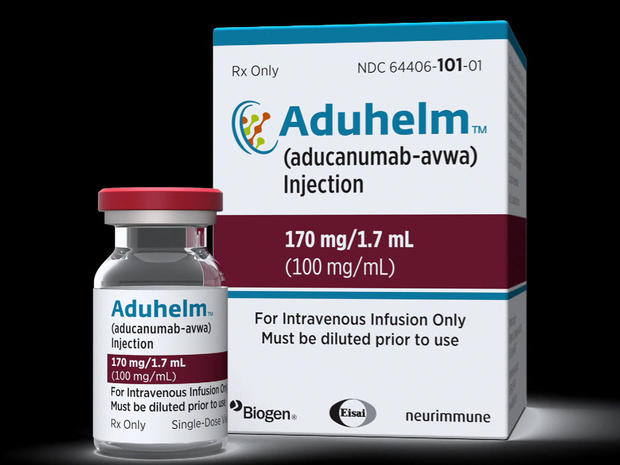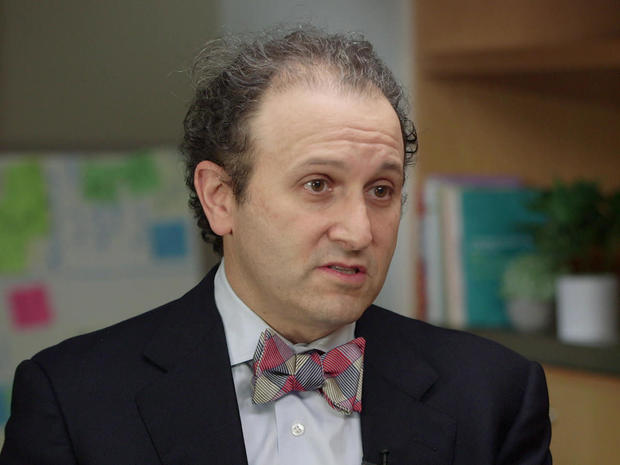(WOWT) - Below are today’s vaccination updates as well as data reports on new cases and other COVID-19 stats reported by health officials across Nebraska and western Iowa.
Keep scrolling to find helpful links and other information, including phone numbers to call for help getting signed up for your vaccine.
Douglas County update
The Douglas County Health Department on Monday reported an additional COVID-19 death since its last report on Saturday: a vaccinated woman in her 70s with underlying conditions has died, bringing the local death toll to 855.
DCHD also confirmed 103 new positive COVID-19 cases since Saturday’s report, bringing the local case total to 92,986.
Local hospital capacity stats are updated daily according to staffing levels. As of Sunday afternoon, local hospitals were 78% full with 310 beds available, up from 297 reported Saturday. ICU beds were 85% full, with 45 beds available, up from 40 reported a day earlier.
While hospitals had a little more room than previous days, they were caring for more COVID-19 patients in more serious condition than they have since January.
Local hospitals were caring for 269 patients with COVID-19 as of Sunday afternoon, the most since Jan. 5. The number of ICU patients jumped to 98 — the highest number since January — up from 75 a week ago and 64 two weeks ago. Seven of those hospitalized with the virus are pediatric COVID-19 patients.
Of the current patients, 50 are on ventilators — the most reported since Dec. 7, 2020, according to the Douglas County COVID-19 dashboard.
Additionally, five adults are awaiting COVID-19 test results.
To date, 71.9% of residents ages 12 and older are vaccinated; that translates to 59.5% of the community. As of Monday, 21.2% of local children ages 5-11 have had their first pediatric COVID-19 vaccination, with 0.84% of local kids considered fully vaccinated.
Monitoring for omicron
DCHD is monitoring for the new omicron variant detected in South Africa, but no such cases have been confirmed in the U.S., Nebraska, or Douglas County so far.
Douglas County’s Health Director Dr. Lindsay Huse told 6 News on Monday that now is not the time to panic, but rather to remain vigilant.
“I would think over the next week we’re going to learn a lot more information about the omicron variant, you know there are a lot of researchers that are currently doing lab testing on the virus to see what they can find out there from its genetic sequencing to how it responds to vaccines, all those sorts of things.”
CHI Health doctors answer questions about omicron
CHI Health hosted a live Q&A about the newest COVID-19 variant on Monday afternoon with Dr. Renuga Vivekanandan and Dr. David Quimby, infectious disease experts with CHI Health-Creighton University.
Both doctors stressed that while masking and vaccinations might not be perfect, they are key to fighting COVID-19.
Lincoln-Lancaster County update
The Lincoln-Lancaster County Health Department on Monday reported two COVID-19 deaths: two unvaccinated men, one in his 50s and another in his 70s, bring that area’s pandemic death toll to 328.
LLCHD also confirmed 391 cases over the holiday weekend and another 126 on Monday, for a total of 517 newly confirmed cases since its last report. That brings the total number of cases for that county to 44,708.
Additionally, the health department said hospitals in the area were caring for 102 COVID-19 patients, including 14 on ventilators.
To date, 61.6% of Lancaster County residents are considered fully vaccinated.
Vaccination clinics
Nebraska DHHS
Federal Retail Pharmacy Program: Pharmacies in and near the Omaha-metro area currently participating in the program include:
- Medicine Man Pharmacy, 15615 Pacific St. Suite 8, Omaha NE 668118
- ViaRx, 825 N. 90th St., Omaha NE 68114
- Walmart, 3010 E. 23rd St., Fremont NE 68025
Retail pharmacy vaccine sign-ups: Baker’s | CVS | Hy-Vee | Kohll’s | Kubat | Sam’s Club | Walmart
Douglas County
Below is a list of the Douglas County COVID-19 vaccination clinics scheduled for this week, including child vaccination clinics at area schools. All clinics are open to the public for any approved shot in the vaccination series. Those planning to get a booster shot should bring their vaccination card.
DCHD has no clinics planned for the rest of the week due to the Thanksgiving holiday, but Health Director Dr. Lindsay Huse reminded residents Tuesday that they are also able to get vaccinated at area pharmacies.
MONDAY
- 4-7 p.m. at Beveridge Magnet Middle School, located at 1616 S. 120th St. – Pfizer for ages 5+
- 4-7 p.m. at McMillan Magnet Middle School, located at 3802 Redick. Ave. – Pfizer for ages 5+
TUESDAY
- Noon-4 p.m. at Douglas County Health Department, located at 1111 S. 41st St. – All vaccines available.
- 4-7 p.m. at R.M. Marrs Magnet Middle School, located at 56919 S. 19th St. – Pfizer for ages 5+
- 4-7 p.m. at Nathan Hale Magnet Middle School, located at 6143 Whitmore St. – Pfizer for ages 5+
WEDNESDAY
- 10 a.m.-1 p.m. at Heart Ministry Center, located at 2222 Binney St. – Pfizer for ages 5+
- 5-7 p.m. at Bryan Middle School, located at 8210 S. 42nd St. – Pfizer for ages 5+
- 5-7 p.m. at Benson High Magnet School, located at 5120 Maple St. – Pfizer for ages 5+
FRIDAY
- 9 a.m.-4 p.m. at Douglas County Health Department, located at 1111 S. 41st St. – All vaccines available.
- 4-7 p.m. at Millard North Middle School, located at 2828 S. 139th St. – Pfizer for ages 5+
SATURDAY
- Noon-5 p.m. at Christmas in the Village at Mount Moriah Missionary Baptist Church, located at 2602 N. 24th St. – All vaccines available.
MONDAY, DEC. 6
- 4-7 p.m. at Andersen Middle School, located at 15404 Adams St. – Pfizer for ages 5+
In-home appointments
DCHD is helping those homebound to get vaccinated, scheduling in-home appointments for all three adult vaccination varieties, for any shot in the series.
To arrange this, call the DCHD information helpline at 402-444-3400.
DCHD booster plan
All Douglas County Health Department pop-up clinics will offer only Pfizer COVID-19 booster vaccinations, but once Moderna and Johnson & Johnson boosters are authorized, the health department plans to have all three available at its in-house and drive-through clinics.
Booster shots are recommended for people who received the Pfizer or Moderna vaccine and are:
- ages 65 and older
- anyone age 18 and older who lives in a long-term care setting
- anyone age 18 and older who has underlying medical conditions
- anyone age 18 and older who lives or works in a high-risk setting
The CDC is recommending booster doses be administered six months after receiving your second dose, and has authorized brand crossover for booster shots. Anyone with questions is advised to contact their healthcare provider for further guidance.
Boosters are also recommended for those who received the J&J vaccine at least two months ago, according to the health department.
Those with questions about boosters, particularly those with questions about underlying medical conditions or being in a high-risk setting, are advised to contact their healthcare providers or call the DCHD Information Line at 402-444-3400.
Underlying medical conditions that qualify for boosters include: cancer; chronic kidney disease; chronic lung diseases like COPD, moderate to severe asthma, interstitial lung disease, damaged or scarred lung tissue, cystic fibrosis, pulmonary hypertension, etc.; certain neurological conditions like dementia, Alzheimer’s, etc.; diabetes; Down syndrome; certain heart conditions such as heart failure, coronary artery disease, cardiomyopathies, hypertension; HIV/AIDS or others in immunocompromised states; liver disease like cirrhosis, liver scarring, nonalcoholic fatty liver disease, etc.; those who are overweight or obese; pregnant and recently pregnant people who are 42 or more days past the end of their pregnancy; certain hemoglobin disorders like sickle cell disease, thalassemia, etc.; current or former smokers; recipients of organ, blood stem cell, or bone marrow transplants; cerebrovascular disease like stroke, etc.; and substance use disorders including alcohol, opioid, cocaine use disorders, etc.
Those “high-risk” occupations qualifying for boosters include: first-responders such as healthcare workers, firefighters, police, and congregate care staff; education staff such as teachers, support staff, daycare workers; food and agricultural workers; manufacturing workers; corrections workers; U.S. Postal workers; public transit workers; grocery store workers; and residents of homeless shelters or correctional facilities.
OneWorld child vaccination clinics
OneWorld is offering pediatric COVID-19 vaccinations, for children ages 5-11, at the following clinics:
- Livestock Building, located at 4920 S. 30th St. in south Omaha
- In Bellevue, at 2207 Georgia Ave.
- In northwest Omaha at 4229 N. 90th St.
- In Plattsmouth at 122 S. Sixth St.
OneWorld will also offer children’s COVID-19 vaccinations at school health centers:
- Bryan High School, located at 4700 Giles Road
- Indian Hill Elementary, located at 3121 U St.
- Liberty Elementary, located at 2021 St. Mary’s Ave.
- Spring Lake Elementary, located at 4215 S. 20th St.
Walk-ins are accepted on a first-come, first-serve basis; or you can call 402-734-4110 to make an appointment.
Children’s Hospital
Children’s Hospital is planning to offer dedicated COVID-19 vaccination clinics for about a month, starting by Thursday, Nov. 11 — or sooner, if they are supplied the doses before that.
- 5-7 p.m. Thursdays at West Village Pointe and Spring Valley offices
- 8 a.m.-noon Saturdays at West Village Pointe and Spring Valley offices
After Saturday, Dec. 11, pediatric COVID-19 vaccinations will be available by appointment at any Children’s Hospital location.
- Tuesday and Thursday appointments available at the Mission Village location, 16909 Q St. Call 402-955-7575 or 402-955-SHOT (7468) for available times.
- Thursday and Friday appointments available at the Dundee location, 4825 Dodge St. Call 402-955-7676 or 402-955-SHOT (7468) for available times.
Nebraska Medicine
Nebraska Medicine is offering COVID-19 vaccinations at clinics in several retail pharmacies and health centers around the Omaha-metro.
NebMed will provide Pfizer vaccinations by appointment at:
- Eagle Run Health Center, located at 132nd Street and West Maple Road
- Fontenelle Health Center, located at 50th Street and Ames Avenue
- Girls Inc. Health Center, located at 45th Street and West Maple Road
- Old Market Health Center, located at 13th and Leavenworth streets
- Village Pointe Health Center, located at 175th and Burke streets
For those looking for walk-in appointments, single-dose Johnson & Johnson vaccinations will be available at these pharmacies:
- Outpatient Pharmacy at Bellevue Health Center, located at 25th Street and Highway 370, will offer J&J vaccinations from 8 a.m. to 8 p.m. Monday through Friday; and from 8 a.m. to 1 p.m. Saturdays.
- Outpatient Pharmacy at Durham Outpatient Center, located at 45th and Emile streets, will offer J&J vaccinations from 7 a.m. to 9 p.m. weekdays; and from 8:30 a.m. to 4:30 p.m. on the weekends.
Around Omaha
SOUTH OMAHA: Testing and vaccinations available at OneWorld, located at 4920 S. 30th St. Call 402-734-4110 to make an appointment for vaccinating anyone age 12 and older.
CHARLES DREW HEALTH CENTER: Call 402-451-3553 to schedule an appointment.
CHURCH CLINIC: Metropolitan Community Chuch of Omaha will host a walk-in COVID-19 vaccination clinic from 9 a.m. to 2 p.m. Saturdays. No ID is required, but a parent or guardian must be present at the clinic with teens ages 12-18.
MCC FORT OMAHA: Vaccinations also will be distributed Mondays and Thursdays from 9 a.m. to 7 p.m. at Metropolitan Community College’s Fort Omaha campus, located at 5300 N. 30th St. Appointments will be made through the county’s vaccination registry.
TOTAL WELLNESS: DCHD has been working with Total Wellness, located at 9320 H Court, to establish a vaccination clinic from 10 a.m. to 3:30 p.m. Tuesdays and Thursdays.
VETERANS: Any eligible veterans can go to the Omaha VA Medical Center’s COVID-19 vaccination clinics’ walk-in hours from 9 a.m. to noon weekdays and 8 a.m. to noon on Saturdays at the new Ambulatory Care Center.
Sarpy/Cass health district
The Sarpy/Cass Health Department offers COVID-19 vaccinations at its offices, located at 701 Olson Drive in Papillion:
- Tuesdays: 9 a.m.-2 p.m.
- Wednesdays: 1-6 p.m.
The health department offers the first and second doses of Pfizer and Modern vaccines, Johnson & Johnson (Janssen) single doses, and booster doses of all three vaccines.
Sarpy/Cass vaccination clinics
The Sarpy/Cass Health Department has scheduled vaccination clinics for all COVID-19 vaccine doses, including pediatric doses:
TUESDAY
- 5-7 p.m. at Plattsmouth Middle School, located at 1724 Eighth Ave.
THURSDAY
- 4-6 p.m. at Weeping Water Public Schools, located 204 W. O St.
FRIDAY
- 4-7 p.m. at Gretna Middle School, 11705 S. 216th St.
MONDAY DEC. 6
- 3-5 p.m. at Springfield Community Center, 104 Main St.
- 4-6 p.m. at Bellevue Lied Activity Center, 2700 Arboretum Drive
TUESDAY DEC. 7
- 4-6 p.m. at Papillion-La Vista South High School, 10799 NE-370
THURSDAY DEC. 9
- 4:30-6:30 p.m. at Conestoga High School, 8404 42nd St., Murray, Neb.
MONDAY DEC. 13
- 1-3 p.m. at Louisville Public Schools, 202 W. Third St.
Appointments are recommended but not required. For scheduling assistance, call 833-998-2275 or 531-249-1873.
Three Rivers health district
Three Rivers Public Health Department is giving out boosters to those in certain risk categories who have had Pfizer vaccinations. It is also working with area businesses and schools to provide plan more COVID-19 vaccination clinics.
Three pediatric vaccination clinics have been set up for children ages 5-11:
- Wahoo: 9 a.m.-3:30 p.m. on the first and third Mondays of the month at 1320 E. 31st St.
- Fremont: 3-6:30 p.m. Tuesdays and noon-3:30 p.m. Fridays at 2400 N. Lincoln Ave.
The health department has the necessary forms posted on their website, for minors and adults, for those who would like to fill them out ahead of their visit.
3RPHD’s regular clinics will continue:
- In Dodge County, the Three Rivers clinic at 2400 N. Lincoln Ave. in Fremont, is open for walk-ins from 3 to 6:30 p.m. Tuesday; and noon to 3:30 p.m. Friday.
- In Saunders County, the Three Rivers clinic in Lake Wanahoo, located at 1320 E. 31st St., is open to walk-ins from 9 a.m. to 3:30 p.m. on the first and third Mondays of the month.
Those who are home-bound or require special accommodations but need a COVID-19 test or vaccine can contact the health district at 402-704-2245 to make arrangements.
Off-line help
CHI HEALTH VACCINE INFORMATION: The info line is available at 402-717-1255 from 7 a.m. to 10 p.m. daily in August.
NEBRASKA VACCINE HOTLINE: Nebraskans can call 531-249-1873 or toll-free at 833-998-2275 for more information on the state’s COVID-19 vaccination process.
DOUGLAS COUNTY HELPLINE: Local COVID-19 information, in Spanish and English, is available from 8:30 a.m. to 4 p.m. weekdays, except for holidays. Call 402-444-3400 for assistance.
IOWA VACCINE HOTLINE: Older or home-bound Iowans looking for help scheduling a COVID-19 vaccination appointment can call 1-866-468-7887 from 8 a.m. to 4:30 p.m. Monday-Friday; or contact Connections Area Agency on Aging at 712-328-2540 or 1-800-432-9209.
Resource links
Where to get a test: Douglas County
Vaccine sign-up: Douglas County | Sarpy/Cass | Three Rivers | Nebraska
Vaccinations at hospitals: Nebraska Medicine | Methodist Hospital | Children’s Hospital
Retail pharmacy vaccine sign-ups: Hy-Vee | Walmart | Sam’s Club | Baker’s | Kohll’s | CVS | Kubat
Vaccine information: Douglas County | Douglas County clinics | Nebraska || Iowa | Pottawattamie County | Mills County | Fremont County
COVID-19 dashboards: Douglas County | Sarpy County | Three Rivers Health District | Lancaster County | Nebraska | Iowa | Worldwide
School info: Omaha Public Schools | Millard Public Schools | Bellevue Public Schools | Westside Community Schools | Papillion-La Vista Community Schools | Gretna Public Schools | Elkhorn Public Schools | Council Bluffs Community Schools | Lincoln Public Schools | UNL | UNO | Midland University
COVID-19 risk dials: Lincoln-Lancaster County
WOWT.com quick search: COVID-19 | Coronavirus | Vaccine
Copyright 2021 WOWT. All rights reserved.
Adblock test (Why?)
Article From & Read More ( Monday Nov. 29 COVID-19 update: Douglas County hospitalizations, ICUs, ventilators hit another peak - WOWT )
https://ift.tt/3Ia0cXV
Health

/cloudfront-us-east-1.images.arcpublishing.com/gray/DDAIH36SXRFIZJW2252FDBMHWA.jpg)















